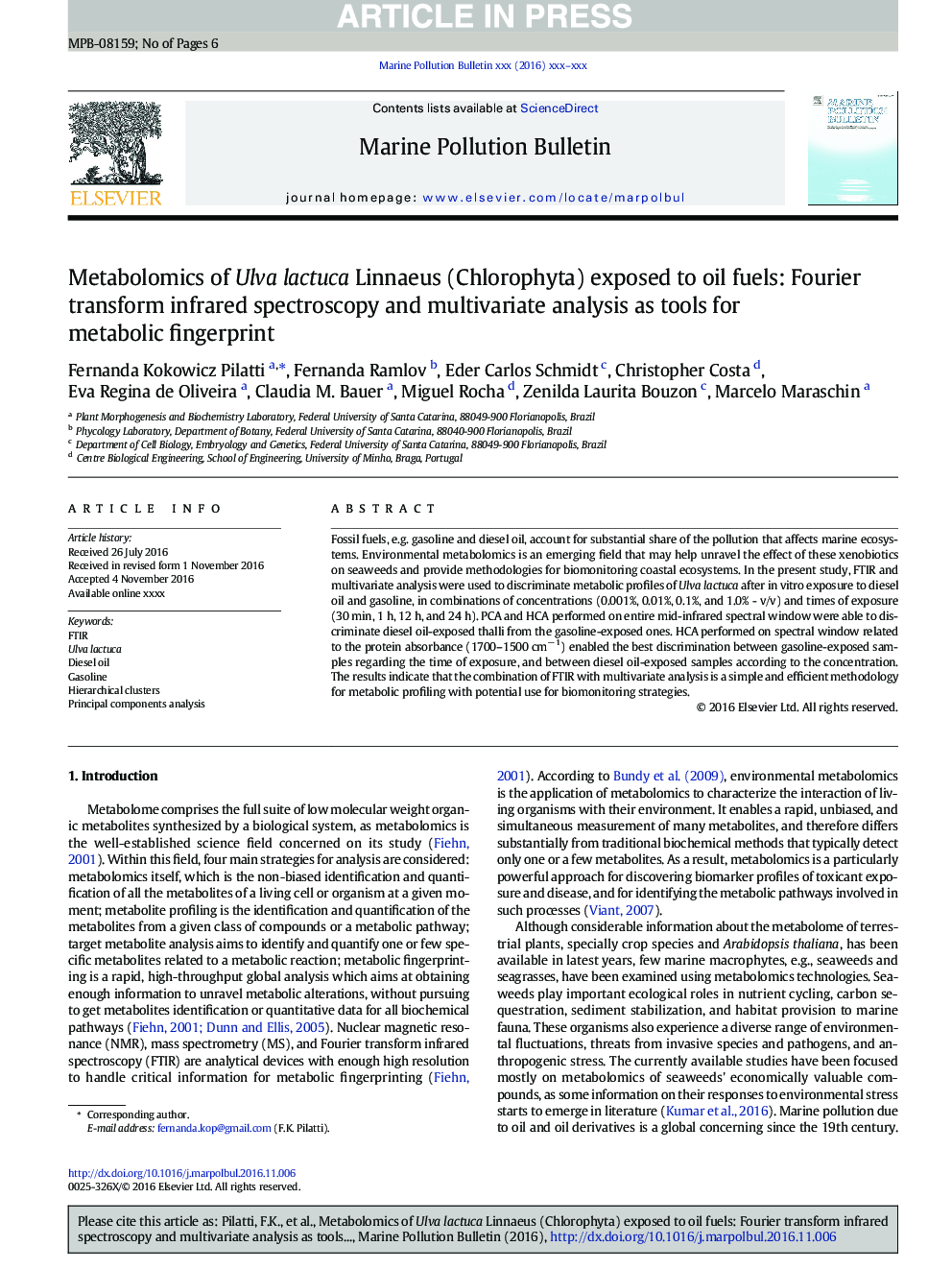| Article ID | Journal | Published Year | Pages | File Type |
|---|---|---|---|---|
| 5757718 | Marine Pollution Bulletin | 2017 | 6 Pages |
Abstract
Fossil fuels, e.g. gasoline and diesel oil, account for substantial share of the pollution that affects marine ecosystems. Environmental metabolomics is an emerging field that may help unravel the effect of these xenobiotics on seaweeds and provide methodologies for biomonitoring coastal ecosystems. In the present study, FTIR and multivariate analysis were used to discriminate metabolic profiles of Ulva lactuca after in vitro exposure to diesel oil and gasoline, in combinations of concentrations (0.001%, 0.01%, 0.1%, and 1.0% - v/v) and times of exposure (30 min, 1 h, 12 h, and 24 h). PCA and HCA performed on entire mid-infrared spectral window were able to discriminate diesel oil-exposed thalli from the gasoline-exposed ones. HCA performed on spectral window related to the protein absorbance (1700-1500 cmâ 1) enabled the best discrimination between gasoline-exposed samples regarding the time of exposure, and between diesel oil-exposed samples according to the concentration. The results indicate that the combination of FTIR with multivariate analysis is a simple and efficient methodology for metabolic profiling with potential use for biomonitoring strategies.
Related Topics
Physical Sciences and Engineering
Earth and Planetary Sciences
Oceanography
Authors
Fernanda Kokowicz Pilatti, Fernanda Ramlov, Eder Carlos Schmidt, Christopher Costa, Eva Regina de Oliveira, Claudia M. Bauer, Miguel Rocha, Zenilda Laurita Bouzon, Marcelo Maraschin,
